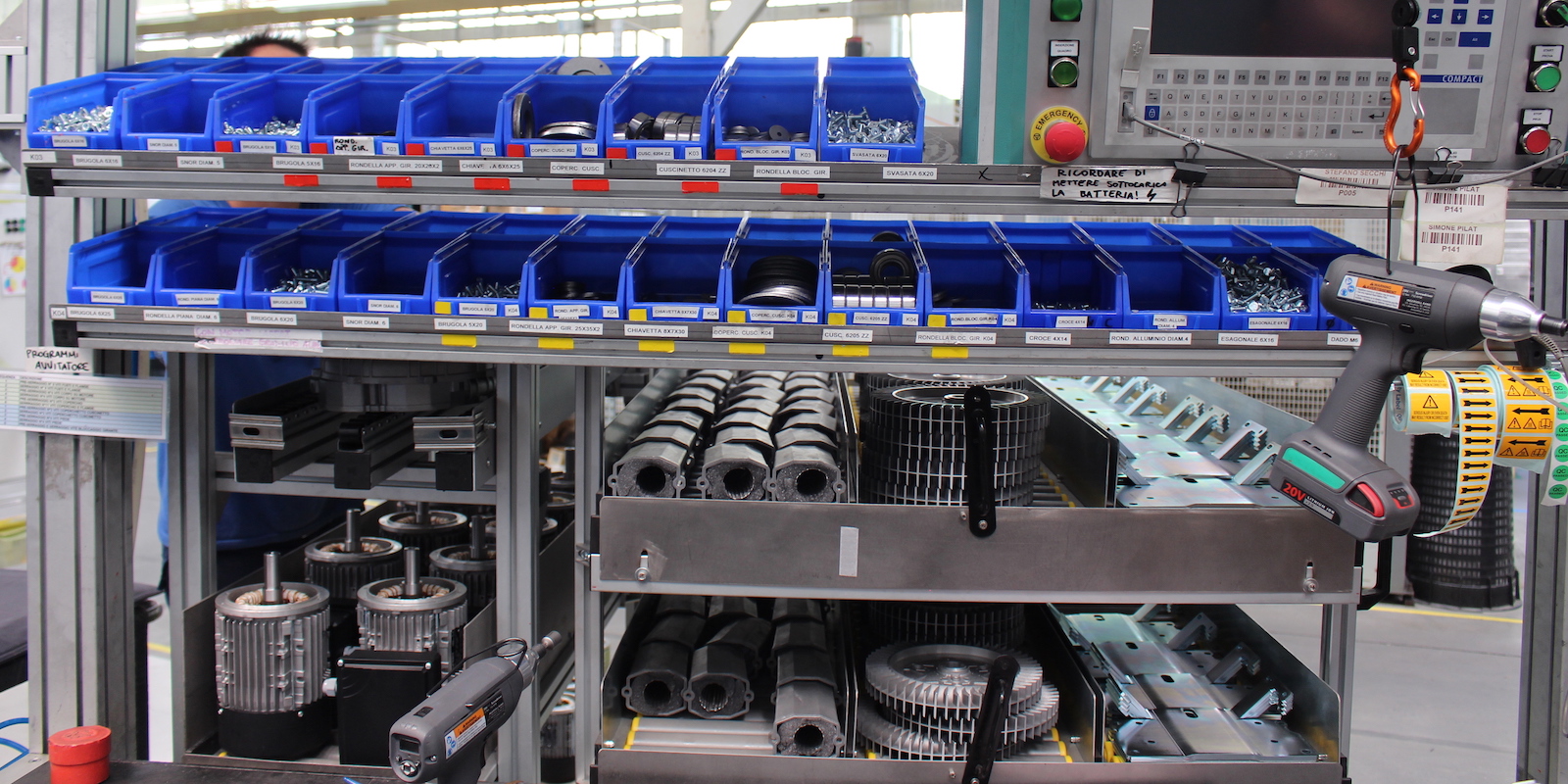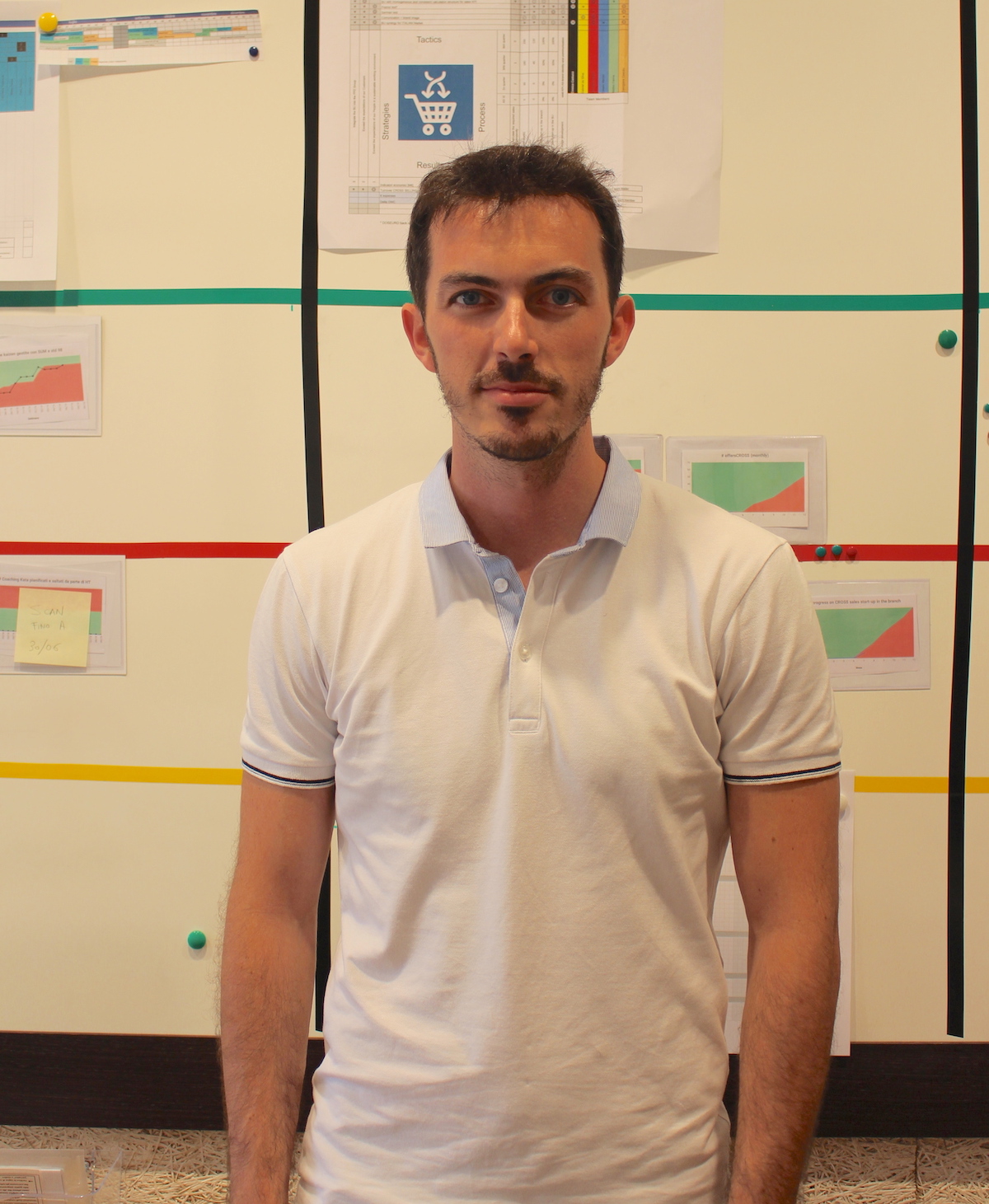
Kaizen all around
FEATURE – Two coaches from Italian company FPZ reflect on their role helping lean thinking spread across the company and its newly-acquired businesses.
Words: Francesca Tiraboschi and Matteo Farina, Kaizen Promotion Office, FPZ Spa - Italy
The objective of FPZ is to develop the capabilities of its people, and our job is therefore to facilitate the execution of the projects the different teams take on rather than do the work for them. We are responsible for helping people to see problems, understand why they are occurring and find solutions through experiments.
That much is clear. Yet, the role of a Kaizen Promotion Officer is not always easy to define. It is interpreted in different ways depending on who you ask: some companies see KPOs as part of the mechanism of the machine, while others consider them the lubricant necessary to ensure the mechanism works. It’s a fine line between the two and, truth is, both situations are true at different times and in different scenarios.
Indeed, our role as KPOs can change dramatically based on the circumstances we are facing. Depending on the context, we are called to do different things: for example, at the beginning of a lean transformation, our main goal is to get people to buy into the potential of lean. We do that by showing results, hoping that over time they will become autonomous and drive improvement themselves. That’s when our role shifts towards coaching and providing support in the improvement. It’s a clear move from push to pull.
An example of this are the kaizen boards in use at FPZ. This well-established tool is used to keep track of the improvements that people are working on. (There is an expectation that every person has at least one active improvement – or “post-it” – but there is also a place for those ideas people suggest as possible improvements that could be addressed in the future, the Idea Bank.) We are at a point where most of the suggested improvements come directly from the operators – like in the case of the many ergonomics changes we have implemented. This means that, as KPOs, we only step in when we see that the ideas are not developed following the lean methodology. We don’t have to encourage people to come up with ideas as much as we used to, but simply ensure that those are the best improvements they can pursue.
One thing that never changes is people’s tendency to jump to conclusions, which at this point we consider part of human nature. We constantly have to reinforce the need to understand the root causes of a problem before coming up with a countermeasure. When it comes to problem solving, one dilemma we are facing is the idea of always structuring it with an A3 rather than using “quick-and-dirty” solutions (they might actually still take months, but they are just not as formalized as an A3). Our CEO would like to see A3 thinking adopted across the business, and we are striving to get there – even though sometimes other tools are often faster in providing you with an answer.
Another important thing we help with is the celebration of results. Every few months, we look at the improvements that have been implemented over a period of time and decide which ones were the most impactful. The winners get a simple gift (no money, because we don’t want people to do lean for money; lean is part of the every-day work) and get to present their improvement with one-page PowerPoint presentation to their colleagues. People appreciate the fact that their managers show up to listen to what they have done to contribute to the improvement of the company. It’s a sign that their voices are being heard. In a lean transformation, it’s important not to forget anyone.
Evidently, different areas of the business are at different levels of adoption of lean thinking and practices, which warrants a different stance from us, too. This also influences the way we explain lean tools and their potential benefits to people: for example, working with process mapping in an office environment presents unique challenges and we are helping people to see inefficiencies and understand how to reducing them will give them more time to spend with value driven activities.
The two of us have been thinking about how to best structure our work as KPOs, based on the help the different business units need. We want a long-term plan for lean thinking in the group, a very interesting challenge now that FPZ is implementing its aggressive growth plan and acquiring companies.
We are now going to share some information on the work we are doing in two organizations FPZ has recently acquired – Arivent (a manufacturer of industrial fans) and Doseuro (a manufacturer of dosing pumps). It’s another example of how differently the work of a KPO can be addressed in different circumstances.
KAIZEN AT ARIVENT
Arivent’s market is complementary to FPZ’s: clients who buy a blower often ask for an industrial fan as well. This made the acquisition of the company a great opportunity for us.
As a family business, Arivent presented interesting challenges from a lean standpoint. The family had been completely engaged in the running of the company, even though they were tied to a traditional form of management.
This might be why at Arivent we saw all the problems a company encounters as it takes its first steps down the lean route. We brought our Lean Light course to people on the shop floor – an introduction to the thinking and techniques – and their attitude changed for the better. They realized they are the change agents, not us, which allowed us to kick off our 5S work in a rather aggressive way.
5S (well, the first three Ss for now) is our main focus on the shopfloor: people get together once a week and clean each other’s workstations. The CEO participates, too, and can typically be seen sweeping the floor together with the operators. Combined, these two elements have create an atmosphere of teamwork and motivated people to commit to the improvement work.
One of the most difficult things about a company that is new to lean is that, when people start coming to you, you have to make the most of that momentum – no matter how little time you have available. If you want to introduce lean, you need to be sure you are ready to handle it. We are trying to ensure people are ready for a tool or practice when we introduce it, which is why the kaizen boards haven’t been fully rolled out at Arivent yet. First, we try them out with a couple of people, gauge their response and then implement them company-wide. Force a tool onto people, and they will reject it.
KAIZEN AT DOSEURO
Doseuro is very fertile ground for lean thinking. When it comes to making an acquisition successful, it is critical to have a team to work with who is compatible in terms of culture and welcoming of change. Doseuro is just like that.
When we first introduced “the FPZ way” to Doseuro people, in the form of an introductory lean course, people were very honest about their doubts and had a lot of questions for us. There is nothing healthier.
At the moment, the lean journey at Doseuro is not particularly structured: we are still at a phase where we are spreading lean across the company by launching a number of projects, from 5S to kaizen boards.
The boards are being particularly successful. After an initial push, people have started to use them with enthusiasm: one of the best projects we are running aims to optimize the work – from order intake to payment – by analyzing the value stream using a makigami process map. This exercise has allowed the team to identify all the activities they need to complete to get to their future state by the end of this year. The boards work like a checkpoint – they are visual and force people to analyze the situation at hand before jumping to solutions (a common problem, as we mentioned above).
An important lesson we have learned is that where the boards struggle to take off (like in the Sales department at Doseuro at first), you need to get people to focus on the problems that are hindering their ability to perform their job. Meet people’s needs, and they will support your efforts to transform the business.
There are two other important activities being carried out at Doseuro that are worth mentioning: first, we are trying to figure out how to approach 5S in the company (integrating in a larger redefinition of the layout of the production site); second, we are trying to better define the production process through VSM improvements and moving towards one-piece flow.
PEOPLE, OUR STRATEGY
What is great about FPZ and the way it pursues its lean transformation is the fact that it puts the person at the core of its work. The company strives to take care of its people and is not just after efficiency. That isn’t to say that we don’t want an optimized process, of course: however, we want a process that works and that allows people to go home happy and fulfilled at the end of the day. At times, this has meant putting people before process. This idea stems from the belief that happy, satisfied people make for a thriving, healthy business – and we think kaizen is the key to get there.
THE AUTHORS


Read more


FEATURE – The belief that standardization kills creativity can be a severe hindrance in a lean transformation. The author discusses how he convinced his team of architects to give standards a try.


PROFILE – This month we meet another member of the lean community, a true pioneer of lean thinking, who contributed to introducing the methodology in Australian cities and healthcare organizations.


INTERVIEW – Ben Hartman has used lean in his micro-farm in Indiana for six years. Not only did he find in it a way to support his family doing what he loves, he might have also discovered how to transform our food system.


CASE STUDY – The Finnish Broadcasting Company has been leveraging lean thinking to scale up its agile work. In the process, it has developed a greater understanding of customer value.

